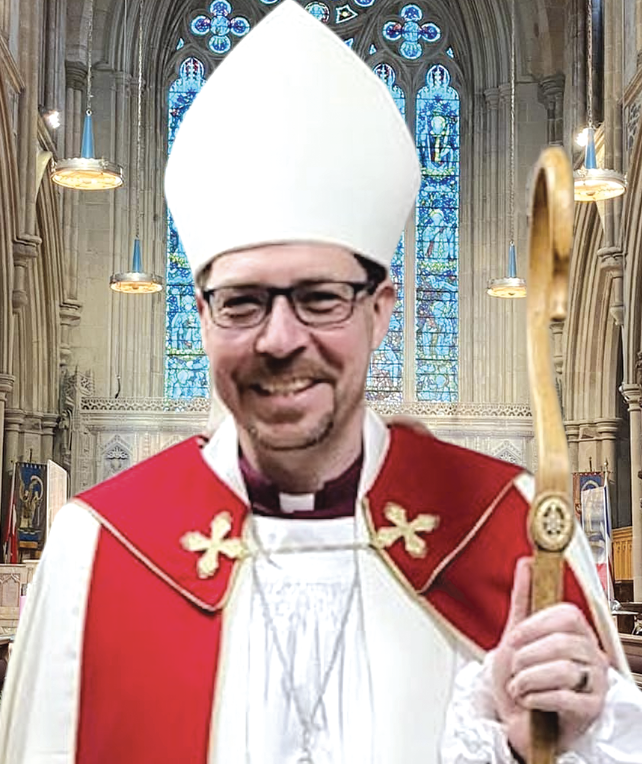When we entered a total lockdown last year, many were predicting the “end” of the Church. What would we do if we couldn’t gather together in worship and fellowship? How would we manage to pay the daily expenses without regular offerings? How will the Church survive?
Yet, over a year (and a second lockdown) later, the Church is still here! Have we changed? Absolutely! Have certain aspects of being Church ended? Hopefully! What I mean by that is hopefully we have lost the habits that often keep us from living and sharing our Christian faith with others.
I’ve witnessed this change simply by the quickness that church communities moved from a physical building to worshipping online in a digital world. Clergy and worship leaders started praying the Daily Offices and proclaiming the Good News to whoever logged on and would listen. These “virtual street preachers” went out on the highways and byways of social media to proclaim Christ to everyone and anyone. And these listeners were not passive observers but, through their comments and emojis, shared their faith (or angry face emoticons ????) for all to see.
Being online also allowed for those living away to be part of important life events. Baptisms, weddings, and funerals, which could only have limited in-person attendance, became international gatherings. Godparents living in another province were able to share in the baptism of a child by making their vows through FaceTime. Grandparents in other countries were able to see their grandchild walk down the aisle on their wedding day. And, sadly, tears were shed as families who were not permitted to travel home participated in online funeral services. While none of this can ever replace being physically present, churches did as best as they could in bringing loved ones together.
Moving to an online church highlighted the importance of connecting. I was heartened to hear the stories of how people would phone senior citizens in their communities to check in or offer to pick up groceries during the lockdown. Churches would loan out computer tablets to those without one so that they could participate in online worship. The clergy would tell me how they would do doorstep visits and prayers from a safe distance. Our hospital chaplains were often the only permitted visitors to an ill or dying member of a family, and provided essential pastoral care in often stressful and difficult circumstances.
But beyond online worship, we witnessed active engagement in important matters of social justice. When the horror of mass graves of Indigenous residential school children was discovered, there were calls for immediate action. In many faith communities, anger was channelled into opportunities for prayer and learning. Many attended virtual Sacred Circle gatherings and Gospel Jamborees listening to the pain and sharing in the prayers of the elders. The Truth and Reconciliation Commission’s Calls to Action were once again brought to the forefront, and each of the 94 Calls to Action was highlighted daily in social media posts. Churches raised funds to support the Anglican Healing Fund, Council of the North, Indigenous Ministries Fund, and Suicide Prevention. When the senseless murder of a Muslim family in Ontario happened, it reminded us of the problem of systemic racism that exists in our churches and communities. Yes, there is anger, and rightfully so. However, churches were called to channel this anger into justice for those all persons regardless of race, religion, gender, sexual orientation, and ethnicity.
While the prediction that the Church would “end” did not materialize, we did see the stress of pandemic fatigue. Clergy, who had very little time or training with a digital ministry, shared stories of being overwhelmed and exhausted trying to keep up with what others were doing online. Vestries and parish councils carried the strain of not being able to maintain clergy salaries and the daily costs with reduced offerings and fundraising. Diocesan leaders made difficult decisions regarding the ending of financial support for wider programs and ministries and staff reductions.
Some of these effects will be felt for many years. It is only by sharing openly and honestly with each other about how the pandemic affected us as individual Christians and as a Church as a whole can we learn how to heal and grow into what God is shaping us to be in the future. This will require patience with one another as we become a blended Church that is both online and in-person. Regardless, we do not do this alone, we have each other to learn from and we have God who has always been with us. I share this prayer by my favourite prayer writer, John Birch (which can be found on the website: www.faithandworship.com)
Help us, as willing workers
to build a better world,
to your design, not ours,
and on firm foundations
that the storms of life
can’t damage or destroy.
Help us, in our labours
to follow your instruction,
listen closely to your word,
that this world we build
might be a beautiful one,
reflecting its designer,
with room enough for all. Amen.


